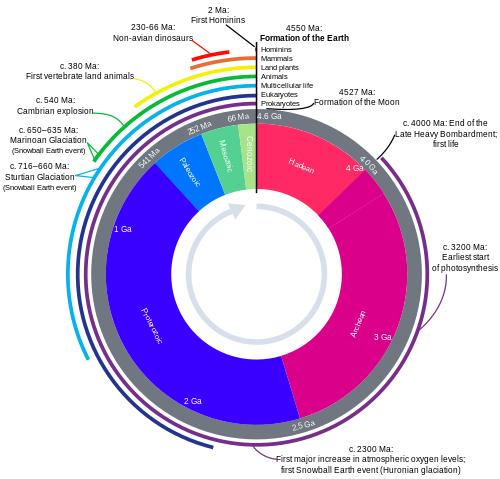In this project, we learned about the history of the Earth. We found that there were several major events in Earth's history, such as the first traces of life, occurring in the Proterozoic Eon. This is significant because we would not exist without life. The timeline supports this because it shows that life happened near the beginning of Earth's history, making it have more impact than the events happening later in Earth's history. We also found that the existence of plants, happening in the Ordovician Period was also very significant. This is because plants started to produce oxygen, enabling other things like animals to survive. The timeline supports this because it shows that plants started to exist before animals did. A third important event that happened in Earth's history is the breaking of the supercontinent Pangea. This is significant because it is why our planet looks like the way it is today. The timeline supports this because it shows that Pangea broke apart before present time. Earth has had a very long history, and each of us live for much less than a "second" of the Earth's "day." I was surprised by the fact that Earth was formed such a long time ago, and that there were many mass extinctions in its history. My thoughts on our impact is that it is a considerably big amount of change for such a small amount of existence.
 |
| Earth's history |

